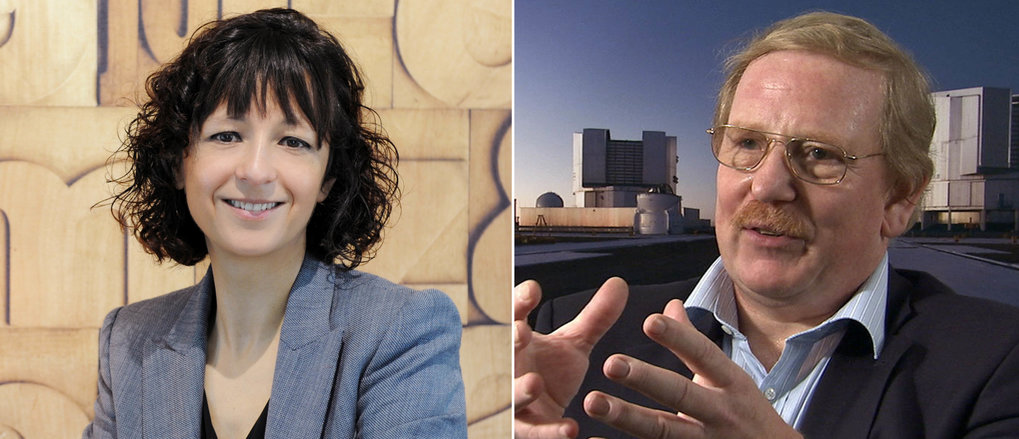Emmanuelle Charpentier honoured with the 2020 Nobel Prize in Chemistry, Reinhard Genzel wins Nobel Prize in Physics
This year, the Max Planck Society finds itself two Nobel Prizes richer within just two days. On Wednesday, October 7, Emmanuelle Charpentier, Director at the Max Planck Research Unit for the Science of Pathogens, was awarded the Nobel Prize for Chemistry 2020 together with Jennifer Doudna, molecular biologist at the University of California, Berkeley. The Royal Swedish Academy of Sciences honoured the two researchers for their work on the CRISPR-Cas9 genome editing tool. Just one day earlier, on Tuesday October 6, the Nobel Committee had already honored Reinhard Genzel, Director at the Max Planck Institute for Extraterrestrial Physics, with the Nobel Prize for Physics 2020 for his observations of the black hole at the center of the Milky Way. Genzel shares half of the prize with Andrea Ghez, a researcher at the University of California, Los Angeles. The other half of the Nobel Prize in Physics goes to Roger Penrose, Professor at Oxford University, for his contributions to black hole research.

In 2001, Reinhard Genzel and his group took a closer look at the heart of our Milky Way in infrared light, some 26,000 light years away. The researchers mapped the motion of stars in the central star cluster with high spatial resolution. They also observed bursts of gas from the immediate vicinity of the black hole and a gravitational redshift caused by this behemoth in the light of a passing star. The Nobel Prize for Physics now honours Reinhard Genzel and his team for these groundbreaking discoveries in astrophysics.
Only second double Nobel within the same year
Emmanuelle Charpentier and Jennifer Doudna were honoured for what is considered a revolution in the fields of medicine, biotechnology, and agriculture. With the CRISPR-Cas9 technology, they discovered a powerful and versatile tool to specifically and efficiently modify any genetic sequence in the cells of living organisms. In 2012, the researchers demonstrated that CRISPR-Cas9 can cut specific DNA sequences.The system was then developed into a precise gene-editing tool that can correct defective DNA. In 2012, Emmanuelle Charpentier and Jennifer Doudna also published guidelines on how the CRISPR-Cas9 system can be used as a versatile genetic tool to modify the genome of cells. Not least because of the precision and the wide range of possible applications of the technology, the scientists are now receiving the highest honour in science.
This is only the second time in the history of Max Planck Society that two different Nobel Prizes are awarded to Max Planck researchers in the same year. In 1995, Christiane Nüsslein-Volhard, Director Emeritus at the Max Planck Institute for Developmental Biology, received the Nobel Prize in Medicine together with the U.S. Americans Edward B. Lewis and Eric F. Wieschaus for their research on the genetic control of early embryonic development. In the same year, Paul J. Crutzen, Director Emeritus of the Max Planck Institute for Chemistry, was honored together with the Mexican Mario Molina and the U.S. American Sherwood Rowland for their elucidation of the chemical processes that contribute to the formation and degradation of ozone.







